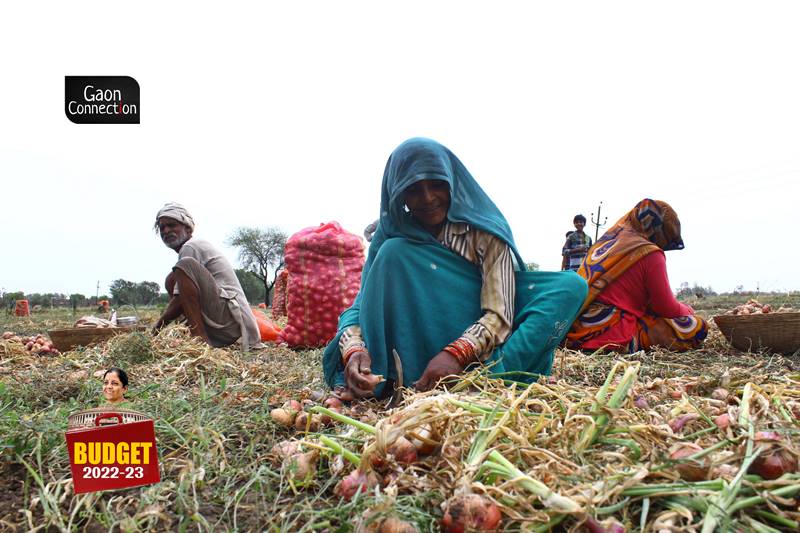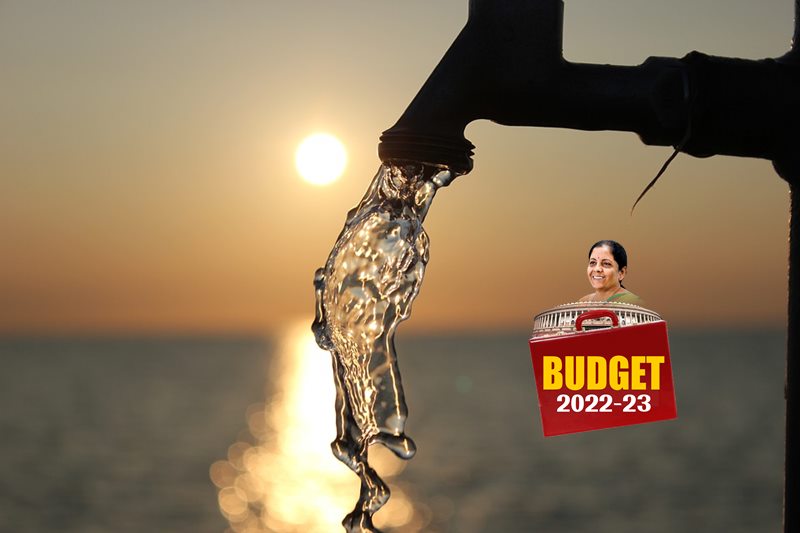Union Budget 2022: Here’s what the budget has to offer rural India
PM-KISAN, crop insurance, drones for digitisation of land records, MGNREGA, rural drinking water scheme, accessible banking facilities, digital learning programmes in villages – here's what rural India has got from this year's Union Budget.


The Union Finance Minister talked about introducing the large-scale use of technology in agriculture.
In her announcement speech for this year’s Union Budget, Finance Minister Nirmala Sitharaman listed a set of measures and fund allocation for rural development and schemes in rural India. In Budget 2022-23, the Ministry of Rural Development has been allocated Rs 138,203.63 crore.
As far as expenditure on major items is concerned, Budget 2022 has made a budget estimate of Rs 206,293 crore towards rural development in 2022-23. This is slightly less than the revised budget estimate of Rs 206,948 crore for rural development in 2021-22. Meanwhile, the actual budget expenditure on rural development in the preceding year 2020-21 was Rs 214,246 crore.
“For delivery of digital and hi-tech services to farmers with involvement of public sector research and extension institutions along with private agri-tech players and stakeholders of agri-value chain, a scheme in PPP mode will be launched,” the Finance Minister said.
“For farmers to adopt suitable varieties of fruits and vegetables, and to use appropriate production and harvesting techniques, our government will provide a comprehensive package with participation of state governments,” she added.

Here is a list of key schemes and programmes meant for rural India and the money allocated to them in the Budget 2022-23.
Highlights of the Union Budget 2022 that concern rural India
Agriculture
The Union Finance Minister, in her speech, also talked about introducing the large-scale use of technology in agriculture. “Use of drones will be promoted for crop assessment, digitization of land records, spraying of insecticides, and nutrients,” Sitharaman said.
She also emphasised on encouraging the practice of chemical-free natural Farming throughout the country. The program has been announced to begin from farmers’ lands in 5-kilometre wide corridors along river Ganga in the northern plains.
The funds allocated for the farmers’ crop insurance schemes have been reduced from Rs 15989 (revised budget estimate for 2021-22) to Rs 15,500 crores in Budget 2022.
PM-KISAN scheme has received a slight increase in funds allocation. As against the revised budget estimate of Rs 67500 crore in budget 2021-22, in the budget 2022, PM-KISAN has been allocated Rs 68,000 crore.
Urea subsidy has been reduced from Rs 75,930 crore (revised estimate for budget 2021-22) to Rs 63,222 in the budget presented today.
The funds allocated for the livestock health and disease control programmes have been increased from Rs 1,470 crores to Rs 2,000 crores.
Rashtriya Krishi Vikas Yojna has been allocated Rs 10,433 crore.
Pradhan Mantri Kisan Sampada Yojana has received an allocation of Rs 900 crore, up from the revised estimate of Rs 791 crore in 2021-22.
Rural Livelihood: MGNREGA funds slashed
Also, the fund allocation for the Mahatma Gandhi National Rural Employment Guarantee Program (MGNREGP), a scheme which is a vital source of employment in the rural areas, has been cut by 25.52 per cent (when compared to the revised estimate for 2021-22).
The Mahatma Gandhi National Rural Employment Guarantee Program has been allotted Rs 73,000 crore for the financial year 2022-23 while the revised estimate for the programme in the last Union Budget was Rs 98,000 crore.
In the past two years of the pandemic, MGNREGA has been the sole source of employment and livelihood to a large chunk of the rural population and Right To Work activists have been demanding a huge raise the the budget for the programme.
Further, funds for ‘LPG Connection to Poor Households’ have been slashed by half from Rs 1,618 crore (revised estimate of 2021-22) to Rs 800 crore in Budget 2022.
Rural Drinking Water
There has been a jump in the allocation of funds under the Jal Jeevan Mission (JJM)/National Rural Drinking Water Mission. While presenting the Budget 2022 in parliament, Finance Minister Sitharaman said that Rs 60,000 crore has been allocated to the Har Ghar Jal Scheme of the Indian government for the financial year 2022-23.
“Under the scheme, 8.7 crore households have already been covered of which 5.5 crore have been covered in the past two years only,” said the finance minister.

She went on to inform that in the coming financial year 2022-23, with an allocation of Rs 60,000 crore, another 3.8 crore households will be covered under the Har Ghar Jal scheme.
Also Read: Rs 60,000 allocated to Har Ghar Jal scheme in Union Budget 2022: FM Nirmala Sitharaman
Rural Roads and Irrigation
Funds allocation under the Pradhan Mantri Gram Sadak Yojna has been increased in Budget 2022. As against the revised estimate of Rs 14,000 for rural roads in 2021-22, in the Budget 2022-21, the scheme has been allocated Rs 19,000 crore.
Pradhan Mantri Krishi Sinchan Yojana has been allocated Rs 12,954 crore. The revised estimate for the previous budget of 2021-22 was Rs 12,706 crore.
Swachh Bharat Mission (Gramin) has received an allocation of Rs 7,192 crore in the Budget 2022-23. In the last budget 2021-22, the budget estimate for this scheme was Rs 9,994 crore whereas the revised estimate was Rs 6,000.
Ensuring quality education in rural areas
The Union Finance Minister acknowledged that due to the COVID19 pandemic-induced closure of schools, children, particularly in the rural areas, and those from Scheduled Castes and Scheduled Tribes, and other weaker sections, have lost almost two years of formal education.
“Mostly, these are children in government schools. We recognise the need to impart supplementary teaching and to build a resilient mechanism for education delivery,” Sitharaman said.

For this purpose, ‘one class-one TV channel’ programme of PM eVIDYA will be expanded from 12 to 200 television channels.
“This will enable all states to provide supplementary education in regional languages for classes 1-12,” she said.
Banking services at post-offices
In her speech, Sitharaman announced that the post offices in the country will now be brought under the coverage of core banking. This should help rural citizens who prefer using the services of the post office.
Sitharaman announced that now it will be possible to transfer money from post office accounts to other bank accounts.
“In 2022, 100 per cent of 1.5 lakh post offices will come on the core banking system enabling financial inclusion and access to accounts through 11 net banking, mobile banking, ATMs, and also provide online transfer of funds between post office accounts and bank accounts,” she added.
“This will promote financial inclusion and will be a big boost for farmers. Budget 2022 focuses on financial inclusion,” Sitharaman said while announcing the move.
All villages to have optical fibres by 2025
Meanwhile, to bring the rural citizens at par with the urban population in terms of connectivity, the Union Finance Minister announced that the government seeks to lay optical fibres in every village across the country by 2025.
“The contracts for laying optical fibre in all villages, including remote areas, will be awarded under the Bharatnet project through public-private partnership (PPP) in 2022-23. Completion is expected in 2025. Measures will be taken to enable better and more efficient use of the optical fibre.

